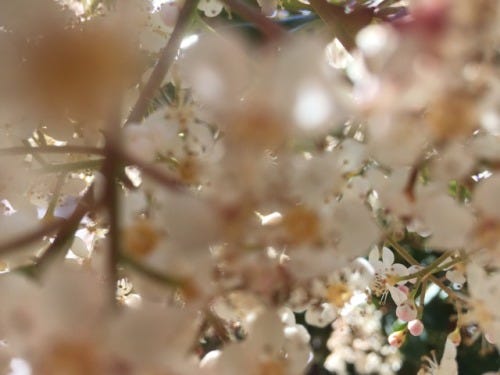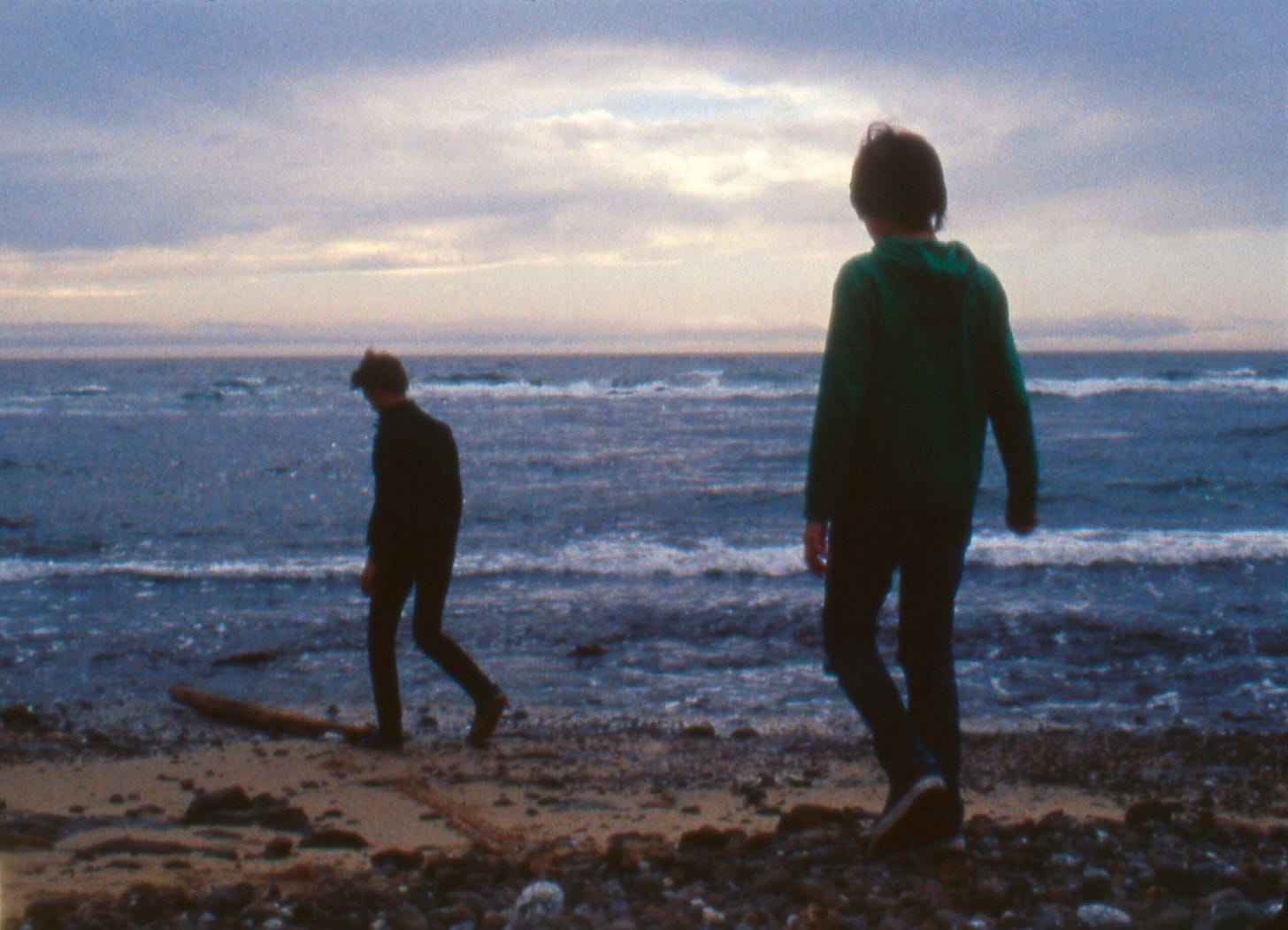Notes on Films by Nathaniel Dorsky and Jerome Hiler (1964-2023) - 5/5
Program 5:
The last program of films was dedicated to some of Dorsky and Hiler’s most recent films. Largely divorced from the couple’s time in the Stone House, these films touched on more contemporary concerns such as climate change.
The opener, Paul Clipson’s Sphinx on the Seine, is a dose of industrial apocalypse. Opening in a train station, we see fiery streams of light smoldering through metal grates. Flickering through black and white shots of electrical towers, swift tracking shots of train tracks, and jump cuts of a flashing, bright orange sun, Clipson’s film quickly devolves into a mass of abstract textures all conveying muggy, hellish, disillusion.
Ruling Star (Jerome Hiler, 2019):
Hiler’s exultant and scary Ruling Star is about the sun. Here, his superimpositions seem to alternate between climate disaster and devotional reverence. Early on, we see the screen engulfed in flames and a shot of people, mostly in silhouette, dancing in a fountain, largely oblivious to their impending doom. But as the film progresses, Hiler’s film becomes another about the beauty of light. In accordance to his love of classical imagery, we see an image of Nefertiti in prayer to the sun. Later, Hiler devotes a section of the film to microscopic imagery of plants and their bright green cells. The film has an immensely pleasureable rhythm, becoming almost meditative by the end. A section of the film features glowing vertical rods. As the light passes over them, they regularly glow and fade. This shot rhymes with one of a red wall, where appearing and disappearing scratches convey a cosmic view of time.
Ember Days (Nathaniel Dorsky, 2021), Interval (Nathaniel Dorsky, 2022):
These two lovely shorts seem of a piece with the other late Dorsky’s from the series, namely O Death. Dorsky adjusts focus and exposure of shots capturing trees and flowers. These two films are respectively shot during spring and summer, and Dorsky’s talent is his ability to powerfully evoke those atmospheres.
Marginalia (Jerome Hiler, 2015):
An incredibly hard film to grasp. Initially, it seems to be about machinery, with double and triple exposures of the sun, electrical towers, and windmills. The film is free flowing and part way through, the film’s focus turns towards notation as curls of hand scratches overwhelm the screen, superimposed over the rest of Hiler’s imagery. Throughout, Hiler includes single-exposure, archival-looking black and white footage of one man teaching archery to another. Between the physicality of the scratches and the nostalgia for human connection, Marginalia strikes me as a film about maintaining our humanity.







